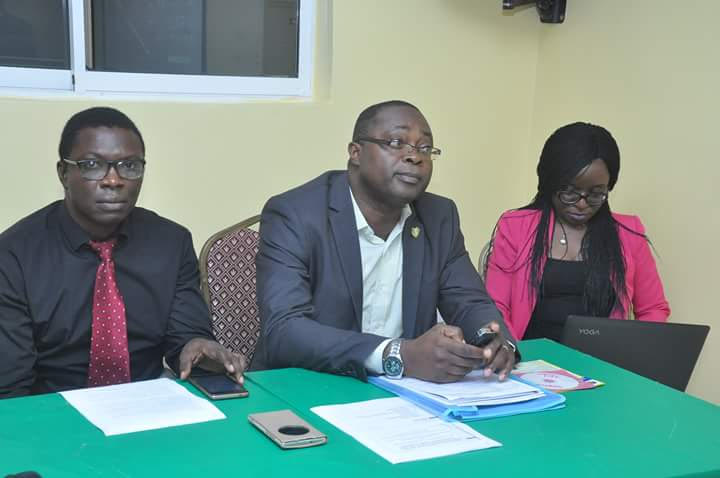The Suicide Research and Prevention Initiative (SURPIN), an initiative of the Lagos University Teaching Hospital recently organised a one-day media workshop/training on how to report suicide and other mental health related issues. Our Assistant Editor, CHINWE MADUAGWU, who was at the workshop reports.
Suicide cases are under reported in Nigeria and when they are reported, they are sensationalised. Ditto other mental health issues. By virtue of its style of reporting, the media sometimes inadvertently encourage suicide though it has the potential through positive reportage to help reduce the rate of suicide in the society.
These were some of concerns of the Suicide Research and Prevention Initiative, (SURPIN) of the Lagos University Teaching Hospital, (LUTH), which led to a one-day training/workshop for media practitioners in Lagos on how to report suicide and other mental health problems.
Tagged ‘workshop on collaborating with the media on Suicide Prevention and other related Mental Health Conditions,’ the workshop was indeed informative and educative.
Dr. Oladipo Adepoju, a Consultant Psychiatrist with LUTH, kicked off the day by explaining that the workshop became necessary as an avenue to educate media practitioners on how to report suicide in order not to put more lives at risk but rather work with the medical experts to bring those on the precipice back. He emphasised the media’s role as opinion shaper and moulder.
Giving an overview of Depression and Suicide, Dr. Bola Okay, an Associate Professor of the Psychiatry Department, lamented the lack of a national suicide prevention strategy even as he disclosed that Nigeria’s suicide rate was the 12th highest in Africa.
Dr. Okay also decried the fact that suicide was criminalised in Nigeria.
For Dr. Ola, the media is a major stakeholder in driving change especially with regards to suicide and mental health related issues. But for the media to drive the change, it has to have the correct information, hence the workshop.
Dr. Ola pointed out that media reporting of suicide has two effects – positive and negative.
Miss Titi Tade, Assistant Director, Medical Social Services Dept. LUTH, gave an overview of the Role of Media Reporting in Suicide Prevention where she pointed out that media reportage can have harmful and protective effect on readers.
Elaborating on the harmful or negative effects of media reporting she disclosed that the earliest evidence was noticed in the 18th century and is known as the Werther effect.
According to her, following the publication of a novel titled “The sorrows of young Werther” by Goethe where Werther shot himself because he fell in love with a woman beyond his reach, a series of suicide hit Europe. The suicide cases were later linked to the novel because many of those who died were dressed in a similar way as Werther, adopted his method or were found with a copy of the novel.
This, she said, led to the book being banned in several European countries.
Miss Tade also told participants at the workshop that a major US retrospective study in the 1970s compared the number of suicides that occurred in the months following a front – page article on suicide with the number of suicides that occurred in the months in which no such article appeared and during the 20-year study period, front page suicide articles were published in 33 months and there was a significant increase in the number of suicides in 26 of those 33 months.
She explained further that recent studies show that; repetitive stories reporting suicide methods and reinforcing misconceptions about suicide were associated with subsequent increases in suicides, youth copycat suicides were more likely to be triggered by newspaper stories that were more prominent i.e. front-page placement or inclusion of a picture, among others.
Furthermore, she said sensational or glamourised reporting of suicide of entertainment industry celebrities appeared to be associated with the greatest increases in subsequent suicides.
READ ALSO: Israel hits 12 targets in Syria after F-16 crash
On the positive side, Miss Tade noted that a Study in Vienna showed that the introduction of media guidelines on the reporting of suicides on the subway resulted in a 75% decrease in the rate of subway suicides and a 20% decrease in the overall suicide rate in Vienna.
Repeated distribution of the guideline, she said led to improvement in the quality of reporting about suicide, reduction in Austria’s national suicide rate with positive impact most pronounced in regions with strong media collaboration. The positive or protective media impact she said, is known as the Papageno effect, named after the character in Mozart’s opera The magic flute – the character had considered suicide but changed his plan when reminded of alternatives to dying.

For digital media, Miss Tade noted that it helps persons at risk of suicide feel less alienated thereby reducing suicidal thoughts.
Giving an overview of other mental disorders, Dr. Peters Nubian also a Psychiatrist listed some mental health disorders to include; depression, schizophrenia, obsessive – compulsive disorder, anti-social personality disorder, attention deficit hyperactive disorder, autism spectrum disorders, deliberate self harm, multiple personality disorder, selective mutism, dyslexia, drug dependence, substance abuse and eating disorder among others.
He also debunked some myths surrounding mental health issues stressing that mental disorders are like any other health problem and can be treated and managed like others.
In his own contribution, Dr. Raphael Ogbolu, a Consultant Psychiatrist with LUTH and Coordinator SURPIN, urged media practitioners to be responsible in reporting suicide and mental health related issues.
According to him every story on suicide should include how to deal with suicidal thoughts, where to get help and should use language that portrays suicide as a public health problem.
On the other hand, he said reports should avoid languages that normalises, misinforms or provides simplistic explanations.
He further urged that suicide stories should not be given prominent placement and undue repetition. “Newspaper stories should ideally be located on the inside page, towards bottom. Broadcast stories should be in the 2nd or 3rd break of TV news while for radio and online, it should even be further down,” he said.
Speaking further, Dr. Ogbolu said the media should avoid explicit and detailed description of the method of death, adding, “in reporting overdose, avoid brand/name, nature, quantity, or combination taken or how gotten. Be cautious when method is rare or novel, avoid promoting locations by using sensationalising language or repeating number of incidents there.”
He suggested some languages, which are more appropriate in reporting suicide. These include ‘died by suicide ‘ or ‘took his/her life as against ‘committed suicide’ as that implies criminality and stigmatises, and ‘non-fatal suicide behaviour’ in place of ‘unsuccessful or successful suicide’ which implies that death is a desirable outcome.
Insisting that there is “no health without mental health,” Dr. Ogbolu noted that “suicide occurs and we can’t ignore it, it is preventable through collaborative efforts, we are all advocates, the media is a key stakeholder, silence kills and that SURPIN is here to help.”
Suicide Research and Prevention Initiative, (SURPIN) is a non -profit initiative of the Lagos University Teaching hospital established for the purpose of suicide prevention through research, crisis intervention, health education and early treatment of depression and drug abuse which are the major risk for suicide.










